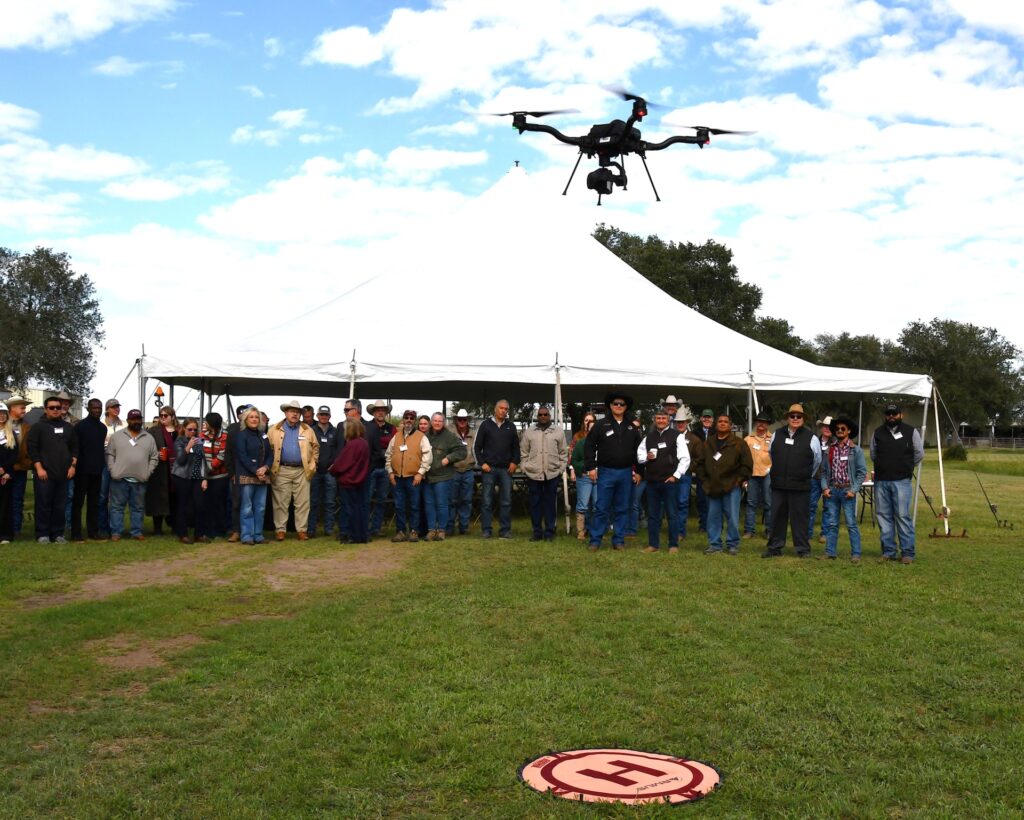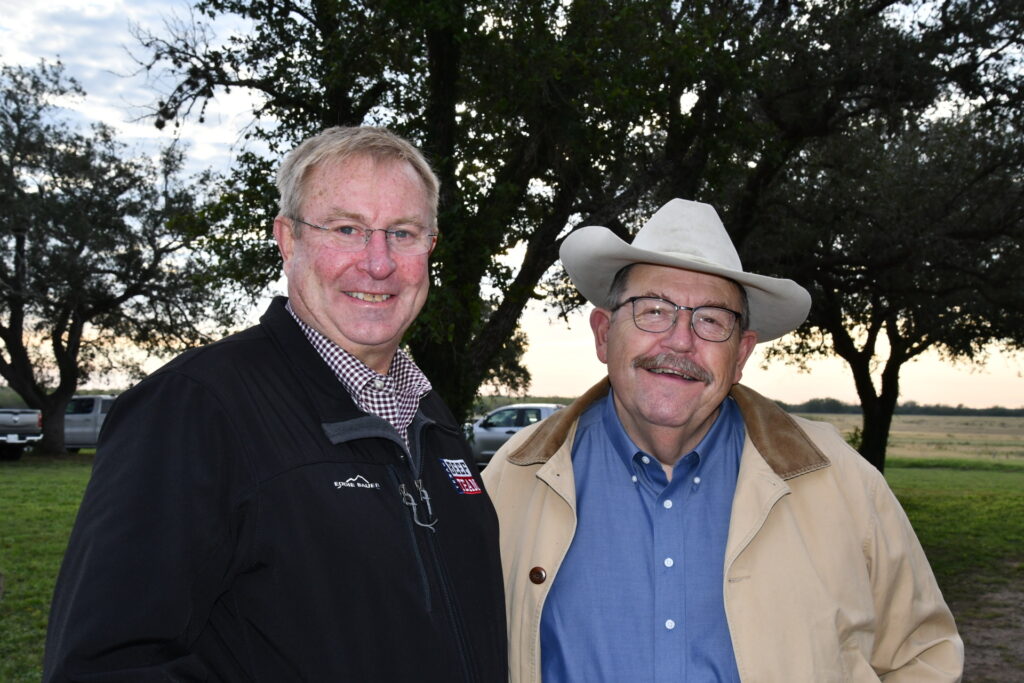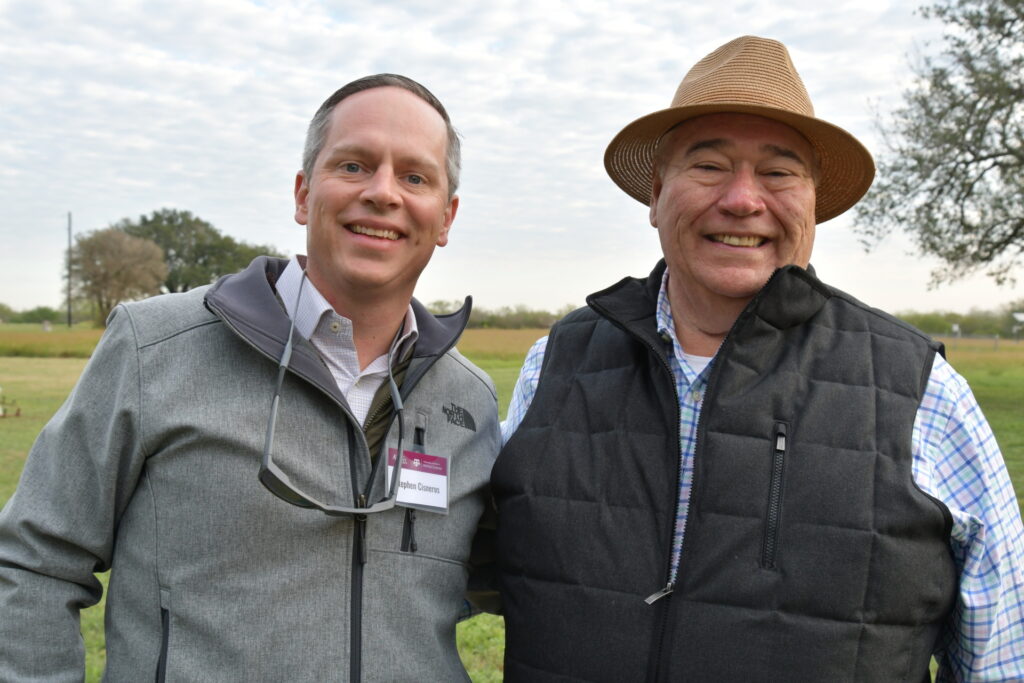Digital agriculture, genetics, forages featured at Beeville station field day
$25,000 gift to AgriLife Research by Albert Lowry ’78 to fund forage research at Beeville
With a rich history of research and developing innovative, profitable practices for beef cattle producers in South Texas and abroad, the Texas A&M AgriLife Research Station at Beeville showcased emerging technologies in cattle production systems during a field day Nov. 2.
Researchers at the event also announced a $25,000 gift to the Beeville station from Albert Lowry ’78, an animal science graduate and South Texas rancher.
Established in 1894, the Beeville station is the oldest research facility west of the Mississippi River. More than 50 ranchers, beef association leaders and representatives from AgriLife Research and Texas A&M AgriLife Extension Service attended the field day and lunch courtesy of Texas Farm Credit.

Forage, genetic research
Leading scientific research efforts at Beeville is Jamie Foster, Ph.D., AgriLife Research forage agronomist and Texas A&M College of Agriculture and Life Sciences Department of Soil and Crop Sciences professor, who provided an overview of forage systems and the important role they play in agriculture systems.
“Forage is the primary input of carbon into the soil in grasslands,” Foster said. “Forages help rainfall infiltrate the soil, store moisture in the soil and protect the soil from erosion by wind and rain.”
Foster discussed the Texas Climate Smart Initiative, which provides incentives for producer practices that increase soil carbon capture.
Meanwhile, Milt Thomas, Ph.D., AgriLife Research livestock geneticist and Department of Animal Science professor, discussed the role of genetics and how they play an important part in cow-herd sustainability.

Mahendra Bhandari, Ph.D., AgriLife Research remote sensing crop physiologist and Department of Soil and Crop Sciences professor, gave attendees a look at how unoccupied aerial vehicles, UAVs, or drones, can be used in capturing forage data and used in predictive models to determine future biomass forage yields. A drone demonstration was also part of field day activities.
During the field day, Foster announced Lowry’s gift to attendees. The rancher has been working with Foster to address forage issues on his ranch, and the gift will help advance the research by Foster and her team at Beeville.
Planning for the future at Beeville
“We have an excellent team here and plan to move forward to broadly benefit the region and state,” said Juan Landivar, Texas A&M AgriLife Research and Extension Center at Corpus Christi director, whose administrative oversight includes the Beeville station.
Recent investments in infrastructure at the Beeville station will include upgrading water systems, which set the stage for an investment in a foundation cattle herd. That will help propel research activities in forage and genetics.

Landivar said the vision for the Beeville station is to promote stewardship of natural resources for coastal plains lands encompassing animal protein production. Its mission is to translate scientific discoveries of real-world solutions that promote sustainability.
The future
The field day also featured remarks by G. Cliff Lamb, Ph.D., AgriLife Research director. Lamb provided attendees with an agency update, which continues to further research projects with more than $300 million in expenditures in fiscal year 2023.
“State appropriations supply basic research capacity which allows us to aggressively seek and successfully obtain significant competitive grants that make up the majority of agency research expenditures,” Lamb said.
He said agency focus areas are:
- Leading-edge innovations and discovery
- Sustainable production systems
- Economic strength
- Healthy living
Lamb said data collection from both crop and livestock production systems will help AgriLife Research move forward with new innovations. Thanks to a significant investment from the The Texas A&M University System, the agency will enhance its use of artificial intelligence and machine learning technologies to capitalize on discovering new science. Lamb said gene editing has “massive opportunity” for beef cattle.
“Imagine having livestock that are fever tick resistant,” Lamb said.
With gene editing, Lamb said livestock with superior traits could be identified.
“These are all technologies that are on the horizon,” he said.


